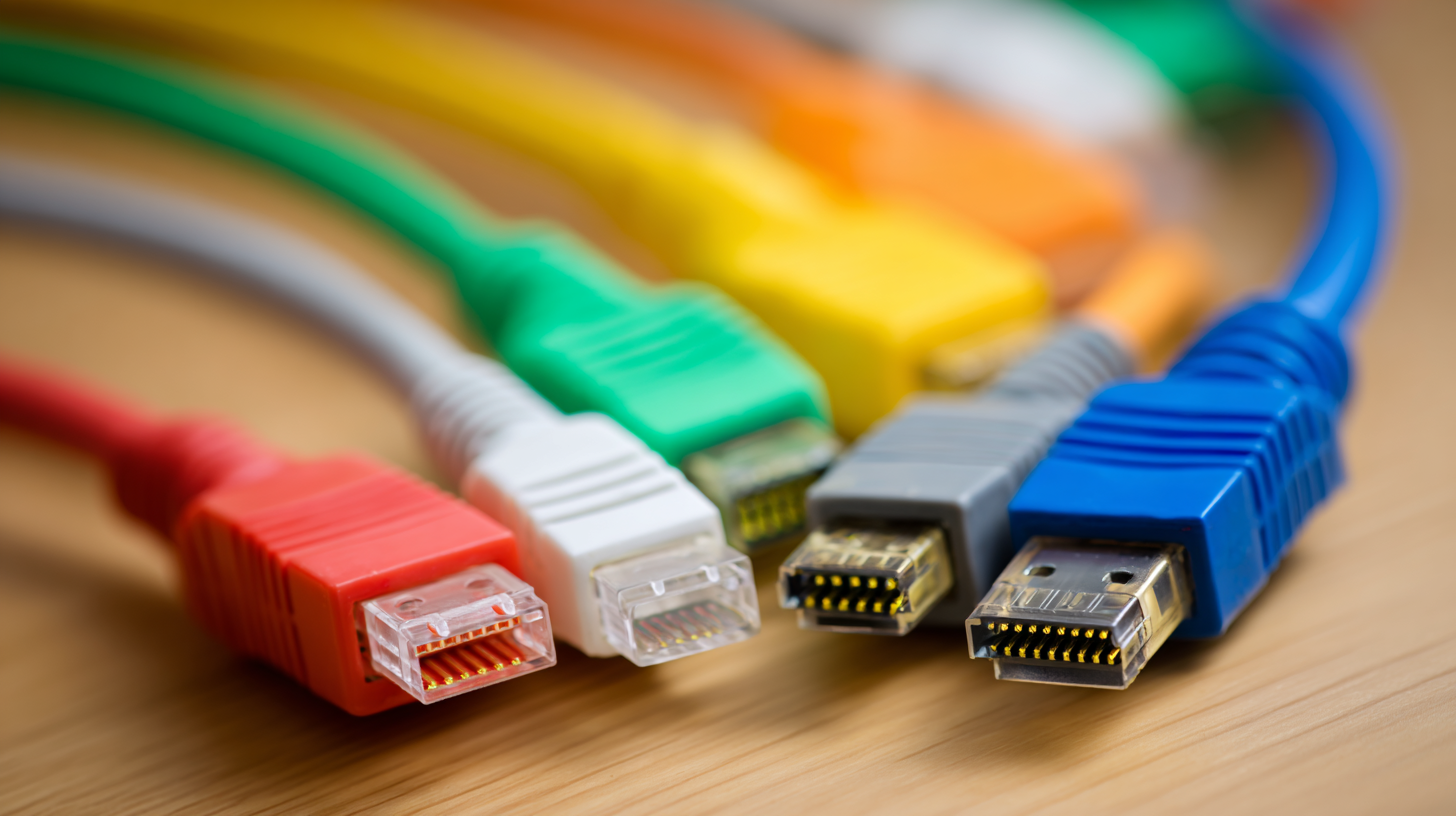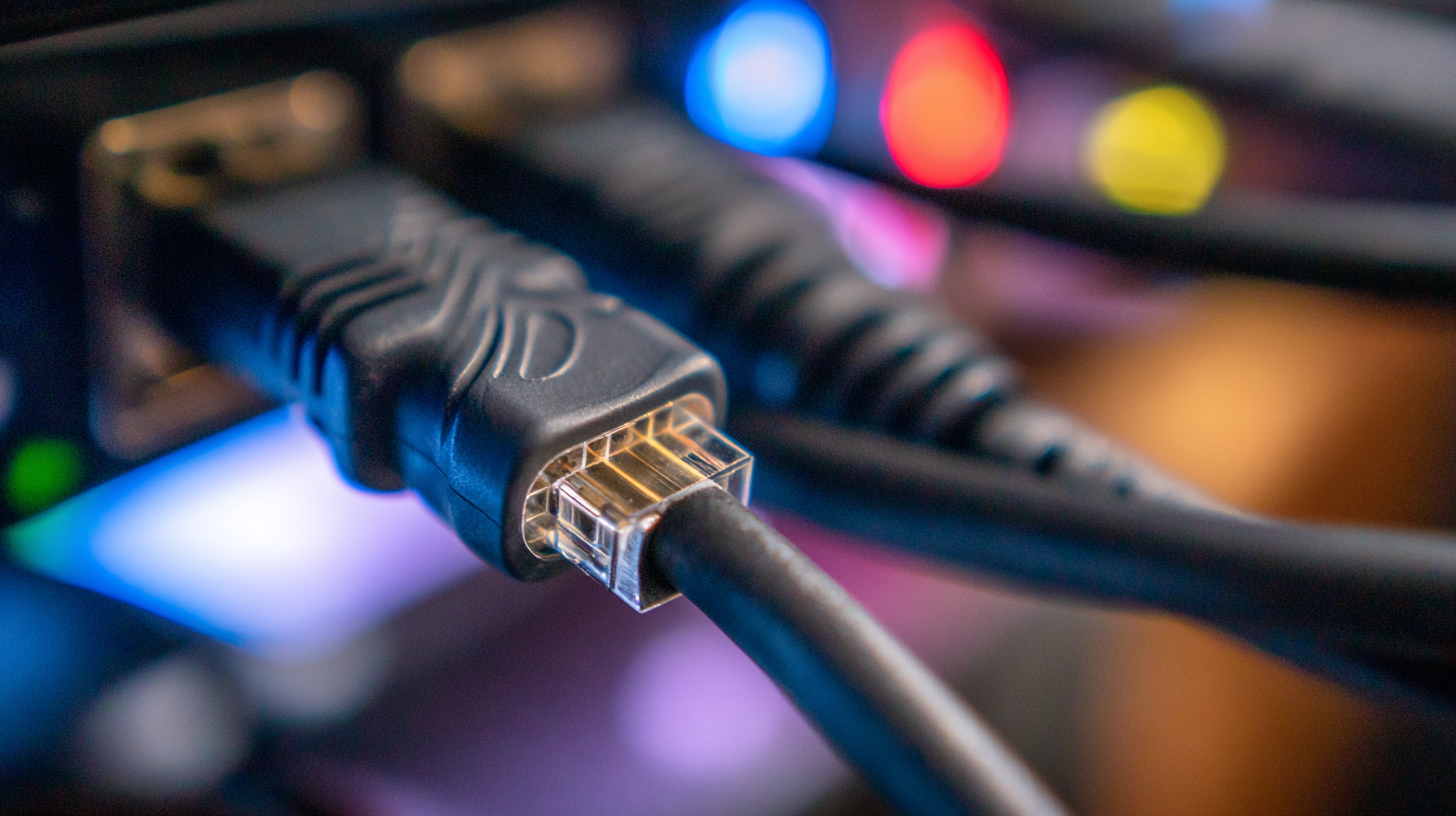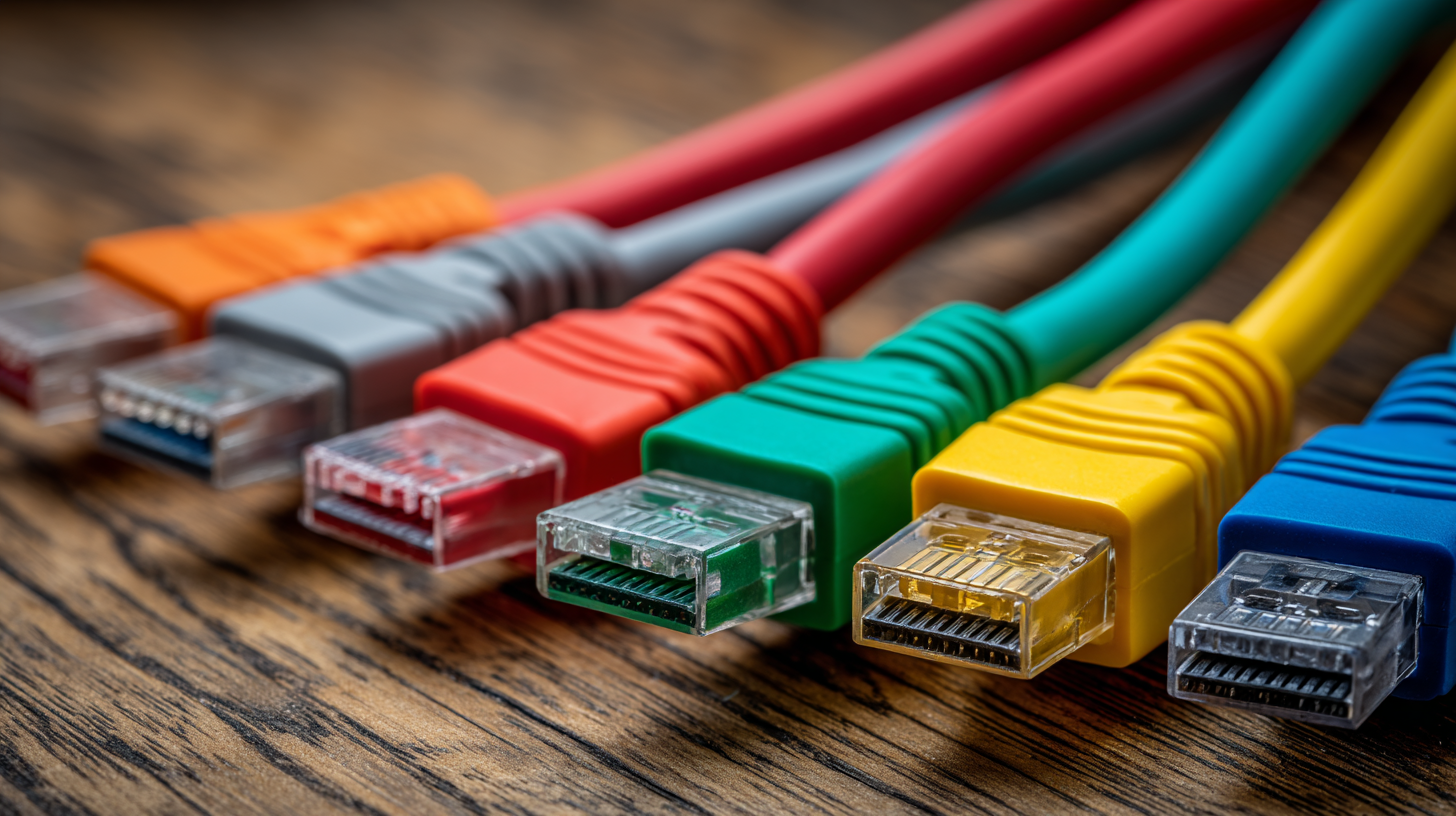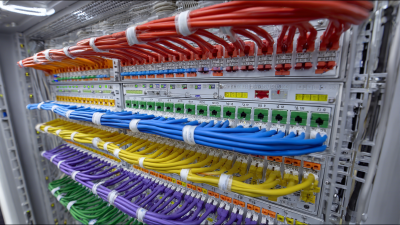The Essential Guide to Choosing the Right Network Cable for Your Home Office Setup
In today’s digital age, setting up a home office that maximizes productivity relies heavily on a robust network infrastructure. According to a report by the International Telecommunication Union, the demand for reliable internet connectivity has surged, with a projected 30% increase in home office setups across the globe. This shift places significant emphasis on the importance of selecting the appropriate network cable, as it directly influences the speed and stability of internet connections. For instance, Cat 6 cables can support up to 10 Gbps, making them an excellent choice for bandwidth-intensive activities such as video conferencing and large file transfers. Understanding the various types of network cables available—such as Ethernet cables—can help users make informed decisions that align with their specific needs and enhance their home office performance.

Understanding the Different Types of Network Cables for Home Offices
In the rapidly evolving landscape of family offices, understanding the distinct types of funds and their market dynamics is crucial for ultra-high-net-worth individuals. As of late 2023, the global hedge fund industry boasts approximately $4.5 trillion in assets under management, with family offices controlling nearly half of this wealth. This staggering amount underscores the importance of proper fund selection within the family office framework, whether it be single-family offices (SFOs) or multi-family offices (MFOs). Different hedge fund types, including equity hedge funds, event-driven funds, and macro funds, cater to various investment strategies and risk appetites, reflecting the diverse approaches family offices can adopt in wealth management.

Recent research highlights that family offices are increasingly setting up operations in financial hubs like Hong Kong, Singapore, and the UAE, driven by favorable policies and economic outlooks. This trend indicates a strategic shift towards creating bespoke investment structures that align with family values and long-term objectives. Furthermore, as the next generation, particularly Generation Z, begins to take charge, family offices must adapt to their evolving perspectives on investment and risk. Reports suggest that approximately 70% of family offices fail due to internal governance issues, accentuating the need for robust management frameworks to ensure longevity and success amidst growing complexity in family wealth management.
Comparing Ethernet Cables: Cat5e, Cat6, and Beyond
When it comes to setting up a reliable network for your home office or gaming setup, selecting the right Ethernet cable is crucial. Ethernet cables come in various categories, with Cat5e and Cat6 being popular choices. Cat5e, while sufficient for most general tasks, offers limited bandwidth and speeds compared to Cat6. For those who stream, game, or work with high-bandwidth applications, Cat6 provides enhanced performance, supporting speeds up to 10 Gbps over short distances.
For gaming purposes, especially with high-performance consoles like the latest gaming system, opting for Cat6 or even Cat6A is advisable. Cat6A can handle greater distances without sacrificing speed, making it optimal for larger setups. This can significantly enhance online gaming experiences by reducing latency and ensuring a steady connection. Whether for a home office or gaming, the choice between these cables can dramatically impact overall network efficiency and performance.
The Essential Guide to Choosing the Right Network Cable for Your Home Office Setup - Comparing Ethernet Cables: Cat5e, Cat6, and Beyond
| Cable Type | Max Speed | Max Distance | Frequency | Use Case |
|---|---|---|---|---|
| Cat5e | 1 Gbps | 100 meters | 100 MHz | General home and office use |
| Cat6 | 10 Gbps | 55 meters | 250 MHz | High-speed networks, gaming |
| Cat6a | 10 Gbps | 100 meters | 500 MHz | Data centers, professional setups |
| Cat7 | 10 Gbps | 100 meters | 600 MHz | Future-proofing, high-performance networks |
| Cat8 | 25-40 Gbps | 30 meters | 2000 MHz | Data centers, server rooms |
Choosing the Right Cable Length for Your Home Office Setup
When setting up a home office, selecting the right cable length is crucial for both functionality and aesthetics. Choosing a cable that is too short can limit mobility and cause unnecessary stress on connections, while overly long cables can lead to clutter and tangling. Therefore, determining the optimal length for your specific setup is essential.
**Tips:** Before purchasing network cables, measure the distance between your router and the devices you plan to connect. Add a little extra length to accommodate any corners or bends without creating tension. This extra allowance can ensure your equipment is easily accessible and minimize wear on the cables.
Also, consider the layout of your workspace. If your office design involves multiple devices at varying distances from the router, using a mix of cable lengths can create a tidy environment. Shorter cables can reduce clutter around desks, while longer ones can be strategically placed to maintain a clean look without compromising performance.

Exploring Shielded vs Unshielded Network Cables and Their Uses
When setting up a reliable home office network, choosing between shielded and unshielded network cables is crucial. Shielded cables are designed to protect against electromagnetic interference (EMI), making them ideal for environments with heavy electronic equipment or long cable runs. They come with an additional layer of shielding, which can help maintain signal integrity. In contrast, unshielded cables are easier to install and are usually sufficient for home environments with minimal interference.
**Tips:** If you are working in an area cluttered with electronic devices, opt for shielded cables to reduce the risk of signal degradation. On the other hand, if your setup is straightforward and you’re on a budget, unshielded cables may be a more economical choice.
Another factor to consider is the cable’s category. For instance, Cat6e cables offer enhanced performance over older categories, supporting faster data transfer rates over longer distances. This is particularly beneficial if you frequently transfer large files or engage in activities that demand high bandwidth, like gaming or video conferencing.
**Tips:** Be sure to check the specifications of the cables you are considering, as not all cables are created equal. For gaming or streaming, prioritize cables that adhere to higher category standards to ensure optimal performance.
Future-Proofing Your Home Office Network: What to Consider
When setting up your home office network, future-proofing is an essential consideration. As technology evolves, the demand for bandwidth continues to grow, making it crucial to invest in the right network cable that can handle increased data requirements. Look for cables that support the latest standards, such as Cat6 or Cat7 Ethernet cables, which provide higher speeds and greater bandwidth compared to their predecessors. This foresight ensures that your network can accommodate future devices and applications without needing frequent upgrades.
Another factor to consider is the length and layout of your home office. Cables should be long enough to connect devices without stretching or compromising signal quality. Additionally, consider the installation of cabling that can withstand potential interference from other electronic devices in your workspace. Opting for shielded cables can provide added protection in environments with high electromagnetic interference. By choosing the right network cable now, you not only enhance your current setup but also lay a solid foundation for future advancements.
Related Posts
-

How to Choose the Right UTP Cat 6 Cables for Your Network Needs
-

7 Best Practices for Selecting the Right Patch Panel for Your Network
-

How to Choose the Right Patch Panel for Your Networking Needs
-

Common Issues Faced When Sourcing Bulk Cat 6 Cable for Global Supply Chains
-

What is the Importance of Network Fiber Optic Cable in Modern Communication
-

7 Essential Tips for Choosing the Best Cat 6 Bulk Cable for Your Network Needs
